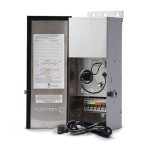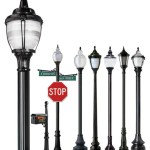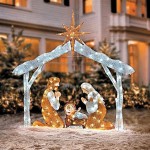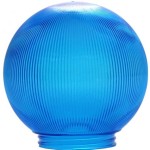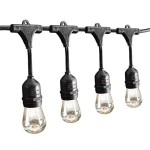Outdoor Blue Light Bulbs: Understanding the Impact and Alternatives
Outdoor lighting plays a crucial role in safety, security, and aesthetics. The selection of light bulbs for outdoor fixtures has evolved significantly, moving from traditional incandescent bulbs to more energy-efficient options such as LEDs. Among the different types of LED bulbs, those emitting blue light have gained considerable attention, particularly regarding their potential impact on the environment and human health. This article explores the characteristics of outdoor blue light bulbs, their potential drawbacks, and alternative lighting solutions for outdoor spaces.
The term "blue light" refers to the portion of the visible light spectrum with shorter wavelengths and higher energy. It is present in natural sunlight but also emitted by artificial light sources, including many LED bulbs. Blue light is often associated with alertness and wakefulness, which can be beneficial during the day. However, excessive exposure to blue light, especially at night, can disrupt the body's natural circadian rhythm and have other negative consequences.
The Potential Ecological Impact of Blue Light
One of the primary concerns surrounding outdoor blue light bulbs is their potential impact on nocturnal ecosystems. Many insects and other nocturnal animals are highly sensitive to light, and artificial light at night can disrupt their natural behaviors. Blue light, in particular, is known to be highly attractive to many insects, leading to increased attraction to lighted areas and subsequent ecological disruptions.
Studies have shown that the presence of artificial light at night can alter the foraging behavior of insects, interfering with their ability to find food and reproduce. This can have cascading effects on the food web, impacting other animals that rely on insects as a food source. For example, bats, which are important predators of insects, may be drawn to areas with artificial light, disrupting their normal hunting patterns and potentially increasing their exposure to predators or other hazards.
Furthermore, artificial light at night can disrupt the migration patterns of birds and other animals that rely on celestial cues for navigation. Blue light, in particular, can interfere with their ability to orient themselves, leading to disorientation and increased risk of collisions with buildings or other structures. This is a significant concern in urban areas, where artificial light is prevalent and can pose a serious threat to migratory animals.
Beyond insects and birds, other nocturnal animals, such as amphibians and reptiles, can also be negatively affected by artificial light at night. For example, the presence of artificial light can disrupt the breeding behavior of amphibians, causing them to avoid illuminated areas and reducing their reproductive success. Similarly, reptiles may be attracted to artificial light, increasing their exposure to predators or other hazards.
Therefore, the use of outdoor blue light bulbs can have significant ecological consequences, disrupting the natural behaviors of nocturnal animals and impacting the health of ecosystems. It is important to consider these impacts when selecting outdoor lighting and to choose alternatives that minimize the potential for ecological harm.
The Impact of Blue Light on Human Health
In addition to its ecological impacts, blue light exposure, especially at night, can affect human health. The human body's circadian rhythm, a 24-hour cycle that regulates sleep-wake patterns and other physiological processes, is highly sensitive to light. Exposure to blue light at night can suppress the production of melatonin, a hormone that promotes sleep and regulates the circadian rhythm.
Suppression of melatonin can lead to difficulties falling asleep, reduced sleep duration, and poorer sleep quality. Chronic sleep disruption has been linked to a variety of health problems, including increased risk of obesity, diabetes, cardiovascular disease, and certain types of cancer. Therefore, minimizing exposure to blue light at night is important for maintaining healthy sleep patterns and overall well-being.
Furthermore, excessive exposure to blue light from screens and other artificial light sources has been associated with eye strain, headaches, and other symptoms of digital eye strain. While outdoor blue light bulbs may not be the primary source of blue light exposure for most people, they can contribute to the overall burden of blue light exposure, especially for those who spend time outdoors at night. Individuals working night shifts, who are more likely to be exposed to outdoor lighting during their sleep hours, may be particularly susceptible to these effects.
It is important to note that not all blue light is detrimental to health. Exposure to blue light during the day can be beneficial, helping to promote alertness and improve mood. However, it is the timing and intensity of blue light exposure that are critical. Minimizing exposure to blue light at night, especially in the hours leading up to bedtime, is important for maintaining healthy sleep patterns and reducing the risk of associated health problems.
There are several strategies that can be used to reduce exposure to blue light at night. These include using blue light filters on electronic devices, wearing blue light-blocking glasses, and avoiding screen use in the hours before bedtime. Choosing outdoor lighting options that emit less blue light is another important step in minimizing exposure to this portion of the visible light spectrum.
Alternative Lighting Solutions for Outdoor Spaces
Given the potential ecological and health impacts of outdoor blue light bulbs, it is important to consider alternative lighting solutions that minimize these effects. Several options are available that provide adequate illumination while reducing blue light emissions.
One alternative is to use amber or red-colored LED bulbs. These bulbs emit light with longer wavelengths and lower energy, which are less disruptive to nocturnal animals and less suppressive of melatonin production. Amber and red lights are often used in areas where minimizing light pollution is a priority, such as near observatories or wildlife reserves. They can also be a good choice for residential outdoor lighting, providing adequate illumination without the drawbacks of blue light emissions.
Another alternative is to use low-pressure sodium (LPS) lamps. These lamps emit a monochromatic yellow light that is less attractive to insects and less disruptive to circadian rhythms than blue light. While LPS lamps are less energy-efficient than LEDs, they can be a good choice for areas where minimizing light pollution is a primary concern.
Furthermore, the use of shielded light fixtures can help to direct light downwards, reducing light trespass and minimizing the amount of light that is scattered into the environment. Shielded fixtures can also help to reduce glare, improving visibility and enhancing safety. Using motion sensors to activate outdoor lights only when needed can also help to reduce light pollution and conserve energy.
Smart lighting systems can also be used to control the color and intensity of outdoor lights. These systems can be programmed to automatically adjust the color temperature of the lights throughout the day, reducing blue light emissions at night. They can also be used to dim the lights when they are not needed, further reducing light pollution and conserving energy.
In addition to choosing appropriate lighting technology, it is important to consider the overall design of outdoor lighting. Minimizing the amount of light used, directing light only where it is needed, and using shielded fixtures can all help to reduce light pollution and minimize the potential for ecological and health impacts. A thoughtful and well-planned outdoor lighting design can provide adequate illumination while minimizing the negative consequences of artificial light at night.
Ultimately, the selection of outdoor lighting should be based on a careful consideration of the potential impacts on the environment and human health. By choosing alternatives to blue light bulbs and implementing thoughtful lighting design principles, it is possible to create outdoor spaces that are safe, functional, and environmentally responsible.

Sleeklighting Blue Led Light Bulb A19 E26 Base Lightbulb 3 Watt Energy Saving Ul Listed Com

Luxrite 11 Watt Equivalent S14 Edison Led Blue Light Bulb 0 5 Outdoor String Ul E26 Base Wet Rated 4 Pack Lr21733 4pk The Home Depot

Torchstar Led A19 Blue Light Bulbs 8w 40w Equivalent E26 Base Colored Lights For Outdoor Fixture Floor Lamp Living Room Decoration 10 000hrs Com

2 Pack Bluex Cfl Blue Light Bulb 24w 100 Watt Equivalent E26 Spiral Replacement Bulbs Decorative Illumination For Indoor Or Outdoor Dj Colored Party Com

5 Led Filament Replacement Bulbs Dark Blue S14 Tinted Patio Light

Luxrite 60 Watt Equivalent A19 Edison Led Blue Light Bulb 4 5 Colored Glass Filament Ul E26 Base Indoor Outdoor 6 Pack Lr21723 6pk The Home Depot

2 Pack Bluex Led A19 Light Bulb 9w 60watt Equivalent E26 Base Blue Party Decoration Porch Home Lighting Holiday Decorative Illumination Bulbs

Ge Classic Led 6 Watts Blue Light Par38 Outdoor Floodlight Bulbs 1 Pack

Led Blue Color Light Bulb A19 E26 Base Bulbs Ubuy

C9 Light Bulb Blue Bulbs Transpa
Related Posts
